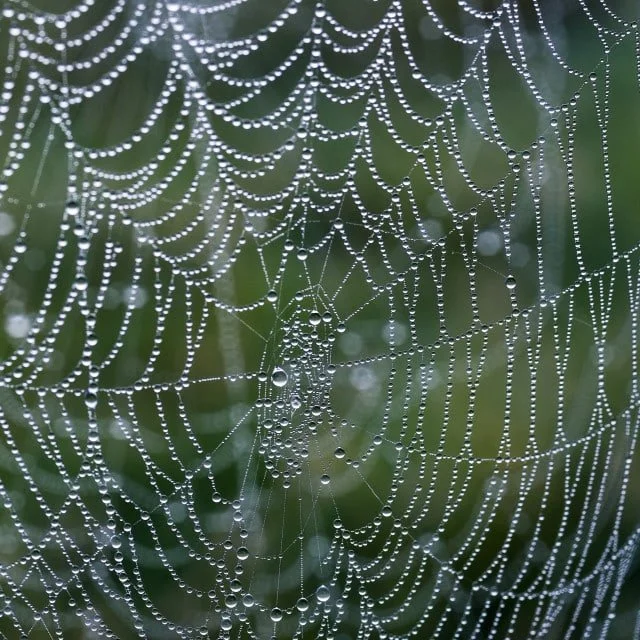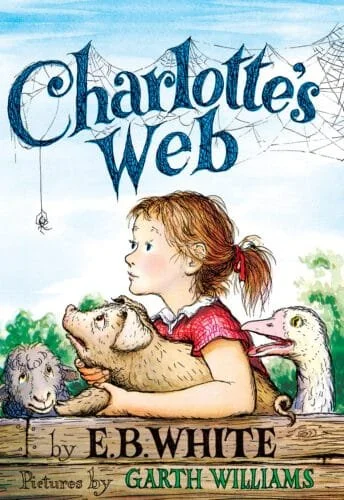Lesson: NHCOPS and the Ladder of Life
Lesson: NHCOPS and the Ladder of Life
When you reframe the periodic table around life, a spiders web appears. Sitting in the middle is Charlotte, the Hydrogen atom.
This lesson: NHCOPS and the ladder of life is a study on how in biology there are six elements that really matter in life. They have a special place in biochemistry during birth, life, and death. We are taught strict periodicity in chemistry, but truly in reality, Hydrogen and Helium are right next to each other.
The point of this lesson is two-fold: We want students to see that the periodic table tells a deeper story about life, we want students to see that the periodic table touches all branches of science. Chemistry, biology, physics, astrophysics, geometry, algebra, zoology, botany, economics, and of course, art and literature as well.
Water vapor condensing on a spider web as dew. Image courtesy wikipedia
Introduce the students to the E.B. White Book, "Charlotte's Web". Ask the students if they have seen any spiders around the camp (they have) ask them what it would be like if a spider explained chemistry like Charlotte explained and modeled confidence to Wilbur.
Would students be willing to listen to Charlotte? Would they believe her?
Materials
Paper (larger paper is better)
A poster for Mendelev's Periodic Table
Construction Paper
Scissors
Glue
Markers, pens, and crayons
Tape
An example of an atom's structure, preferably Carbon
Tape for hanging art
Computer or tablet with Wifi for conducting research
Alternate: Use magnets and steel balls to build atoms and their valence shields
Instructions
Ask students to pick one of the periodic elements that are in green
Allow them time on the computer, tablet or phone to research their atomic element
Once they have drawn their atom and it's correct proton, neutrons, nucleus, and electron valence shield have them wait
Ask three probing questions about each atom:
Is this atom stable?
Does this atom WANT to bond well?
Why do you think either way?
Allow students to guess here. They will have instincts and ideas
We do not want to crush curiosity, but enable educated guessing
If you really want to blow their minds, prepare ahead of time a diagram of Gold (AU 72) and Mercury (Hg 80) How on earth can they be so similar and different at the same time. Ask students why Carbon is such an excellent choice for life. Let them make inferences from the diagrams and what they now now about ionic and covalent bonds.
Instructional Integration
This model of the periodic table of elements allows students to make natural connections between energy, materials, life sciences, and physics and chemistry. There are also mathematical, trigonometric and calculus vector and differential equations that are organically tied to this model.
How We Think of the Periodic Table Still To This Day
Additionally, this model allows students to explore the inter-relationships between organisms, ecologies, and complex systems in a consistent and relatable way. The web of life is a dynamic representation of the natural law of the path of least resistance. It is easier to move around a web than it is to move in a static regimented model based solely on polarity, phase transition, and energy levels.






